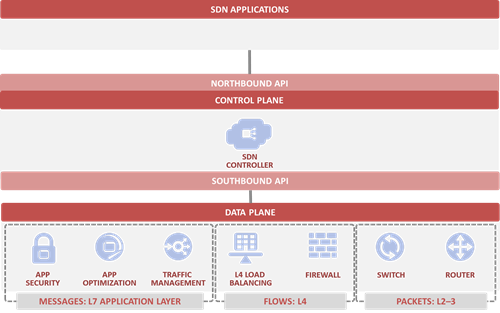xmpp
2 TopicsSDN and OpenFlow are not Interchangeable
#SDN #OpenFlow They aren't,seriously. They are not synonyms. Stop conflating them. New technology always runs into problems with terminology if it's lucky enough to become the "next big thing." SDN is currently in that boat, with a nearly cloud-like variety of definitions and accompanying benefits. I've seen SDN defined so tightly as to exclude any model that doesn't include Open Flow. Conversely, I've seen it defined so vaguely as to include pretty much any network that might have a virtual network appliance deployed somewhere in the data path. It's important to remember that SDN and OpenFlow are not synonymous. SDN is an architectural model. OpenFlow is an implementation API. So is XMPP, Arista's CloudVision solution for a southbound protocol. So are potentially vendor specific southbound protocols that might be included in Open Daylight's model. SDN is an architectural model. OpenFlow is an implementation API. It is one possible southbound API protocol, admittedly one that is rapidly becoming the favored son of SDN. It's certainly gaining mindshare, with a plurality of respondents to a recent InformationWeek survey on SDN having at least a general idea what Open Flow is all about, with nearly half indicating familiarity with the protocol. The reason it is important not to conflate Open Flow with SDN is that both the API and the architecture are individually beneficial on their own. There is no requirement that an Open Flow-enabled network infrastructure must be part of an SDN, for example. Organizations looking for benefits around management and automation of the network might simply choose to implement an Open Flow-based management framework using custom scripts or software, without adopting wholesale an SDN architecture. Conversely, there are plenty of examples of SDN offerings that do not rely on OpenFlow, but rather some other protocol of choice. Open Flow is, after all, a work in progress and there are capabilities required by organizations that simply don't exist yet in the current specification - and thus implementation. Open Flow Lacks Scope Even ignoring the scalability issues with OpenFlow, there are other reasons why Open Flow might not be THE protocol - or the only protocol - used in SDN implementations. Certainly for layer 2-3, Open Flow makes a lot of sense. It is designed specifically to carry L2-3 forwarding information from the controller to the data plane. What it is not designed to do is transport or convey forwarding information that occurs in the higher layers of the stack, such as L4-7, that might require application-specific details on which the data plane will make forwarding decisions. That means there's room for another protocol, or an extension of OpenFlow, in order to enable inclusion of critical L4-7 data path elements in an SDN architecture. The fact that OpenFlow does not address L4-7 (and is not likely to anytime soon) is seen in the recent promulgation of service chaining proposals. Service chaining is rising as the way in which L4-7 services will be included in SDN architectures. Lest we lay all the blame on OpenFlow for this direction, remember that there are issues around scaling and depth of visibility with SDN controllers as it relates to directing L4-7 traffic and thus it was likely that the SDN architecture would evolve to alleviate those issues anyway. But lack of support in Open Flow for L4-7 is another line item justification for why the architecture is being extended, because it lacks the scope to deal with the more granular, application-focused rules required. Thus, it is important to recognize that SDN is an architectural model, and Open Flow an implementation detail. The two are not interchangeable, and as SDN itself matures we will see more changes to core assumptions on which the architecture is based that will require adaptation.640Views0likes1CommentF5 10200v L7 concurrent connection limit
I was reading datasheet and found following numbers L7 requests per second: 4M L4 connections per second: 1.5M L4 HTTP requests per second: 14M Maximum L4 concurrent connections: 80M Throughput: 84 Gbps/40 Gbps L4/L7 But i want to know what would be concurrent L7 TCP connection limit on these hardware? In short we want to run XMPP application (with SSL) with persistent connection so trying to find max concurrent client can talk to F5.484Views0likes1Comment
